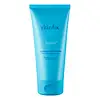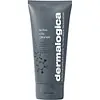What's inside
What's inside
 Key Ingredients
Key Ingredients

 Benefits
Benefits

 Concerns
Concerns

 Ingredients Side-by-side
Ingredients Side-by-side

Water
Skin ConditioningSodium Cocoyl Isethionate
CleansingCoco-Glucoside
CleansingKaolin
AbrasiveCoco-Betaine
CleansingCoconut Alcohol
EmollientHydrogenated Coconut Acid
EmollientStearyl Alcohol
EmollientMaltooligosyl Glucoside
Skin ConditioningPropanediol
SolventTitanium Dioxide
Cosmetic ColorantBetaine
HumectantBehenyl Alcohol
EmollientSimmondsia Chinensis Seed Oil
EmollientAloe Barbadensis Leaf Juice Powder
Skin ConditioningSodium Isethionate
CleansingHydroxypropyl Methylcellulose
Emulsion StabilisingSodium Chloride
MaskingHydrogenated Starch Hydrolysate
Humectant1,2-Hexanediol
Skin ConditioningMontmorillonite
AbsorbentCaprylhydroxamic Acid
Trisodium Ethylenediamine Disuccinate
Xanthan Gum
EmulsifyingSodium Hydroxide
BufferingWater, Sodium Cocoyl Isethionate, Coco-Glucoside, Kaolin, Coco-Betaine, Coconut Alcohol, Hydrogenated Coconut Acid, Stearyl Alcohol, Maltooligosyl Glucoside, Propanediol, Titanium Dioxide, Betaine, Behenyl Alcohol, Simmondsia Chinensis Seed Oil, Aloe Barbadensis Leaf Juice Powder, Sodium Isethionate, Hydroxypropyl Methylcellulose, Sodium Chloride, Hydrogenated Starch Hydrolysate, 1,2-Hexanediol, Montmorillonite, Caprylhydroxamic Acid, Trisodium Ethylenediamine Disuccinate, Xanthan Gum, Sodium Hydroxide
Water
Skin ConditioningSodium Cocoyl Isethionate
CleansingGlycerin
HumectantCarthamus Tinctorius Seed Oil
MaskingKaolin
AbrasiveGlyceryl Stearate Se
EmulsifyingPEG-100 Stearate
Propanediol
SolventCoconut Acid
CleansingButylene Glycol
HumectantCharcoal Powder
AbrasiveSodium Astrocaryum Murumuruate
EmollientBrassica Oleracea Italica Extract
AstringentBioflavonoids
Skin ConditioningCitrus Grandis Peel Oil
MaskingPalmitic Acid
EmollientSodium Isethionate
CleansingAloe Barbadensis Leaf Extract
EmollientMelaleuca Alternifolia Leaf Oil
AntioxidantCocamidopropyl Betaine
CleansingTocopheryl Acetate
AntioxidantMyristic Acid
CleansingQuartz
AbrasiveStearic Acid
CleansingEthylhexylglycerin
Skin ConditioningCitric Acid
BufferingO-Cymen-5-Ol
AntimicrobialCetearyl Alcohol
EmollientPolysorbate 60
EmulsifyingPentylene Glycol
Skin ConditioningPolyacrylate Crosspolymer-6
Emulsion StabilisingCaprylyl Glycol
EmollientTetrasodium Glutamate Diacetate
Sodium Hydroxide
BufferingDisodium EDTA
Citral
PerfumingLimonene
PerfumingCI 77891
Cosmetic ColorantWater, Sodium Cocoyl Isethionate, Glycerin, Carthamus Tinctorius Seed Oil, Kaolin, Glyceryl Stearate Se, PEG-100 Stearate, Propanediol, Coconut Acid, Butylene Glycol, Charcoal Powder, Sodium Astrocaryum Murumuruate, Brassica Oleracea Italica Extract, Bioflavonoids, Citrus Grandis Peel Oil, Palmitic Acid, Sodium Isethionate, Aloe Barbadensis Leaf Extract, Melaleuca Alternifolia Leaf Oil, Cocamidopropyl Betaine, Tocopheryl Acetate, Myristic Acid, Quartz, Stearic Acid, Ethylhexylglycerin, Citric Acid, O-Cymen-5-Ol, Cetearyl Alcohol, Polysorbate 60, Pentylene Glycol, Polyacrylate Crosspolymer-6, Caprylyl Glycol, Tetrasodium Glutamate Diacetate, Sodium Hydroxide, Disodium EDTA, Citral, Limonene, CI 77891
Ingredients Explained
These ingredients are found in both products.
Ingredients higher up in an ingredient list are typically present in a larger amount.
Kaolin is a clay. It is used for oil control and to help minimize pores. Like other clays, kaolin has the ability to absorb excess sebum or oil. This can help clean out pores and mattify the skin.
Some types of kaolin may have exfoliating properties. When water is added to kaolin, it becomes a paste with small abrasive particles.
Most kaolin is a white color, but may be pink/orange/red depending on where it comes from.
The name 'kaolin' comes from a Chinese village named 'Gaoling'. Kaolin clay comes from rocks rich in kaolinite. Kaolinite, the mineral, has a silicate layered structure. Kaolinite is formed from chemical weathering of aluminum siilicate minerals.
Besides skincare, kaolin is commonly used to make glossy paper, in ceramics, toothpaste, and as medicine to soothe stomach issues.
Learn more about KaolinPropanediol is an all-star ingredient. It softens, hydrates, and smooths the skin.
It’s often used to:
Propanediol is not likely to cause sensitivity and considered safe to use. It is derived from corn or petroleum with a clear color and no scent.
Learn more about PropanediolSodium cocoyl isethionate is a natural ingredient from coconut oil. It is an ultra gentle cleanser that gives a nice foam without drying the skin or impacting the skin barrier.
The amount of foam created depends on the amount of sodium cocoyl isethionate used in the product.
This ingredient also helps improve the spreadability of a product.
Learn more about Sodium Cocoyl IsethionateSodium Hydroxide is also known as lye or caustic soda. It is used to adjust the pH of products; many ingredients require a specific pH to be effective.
In small amounts, sodium hydroxide is considered safe to use. However, large amounts may cause chemical burns due to its high alkaline.
Your skin has a natural pH and acid mantle. This acid mantle helps prevent harmful bacteria from breaking through. The acid mantle also helps keep your skin hydrated.
"Alkaline" refers to a high pH level. A low pH level would be considered acidic.
Learn more about Sodium HydroxideWe don't have a description for Sodium Isethionate yet.
Water. It's the most common cosmetic ingredient of all. You'll usually see it at the top of ingredient lists, meaning that it makes up the largest part of the product.
So why is it so popular? Water most often acts as a solvent - this means that it helps dissolve other ingredients into the formulation.
You'll also recognize water as that liquid we all need to stay alive. If you see this, drink a glass of water. Stay hydrated!
Learn more about Water